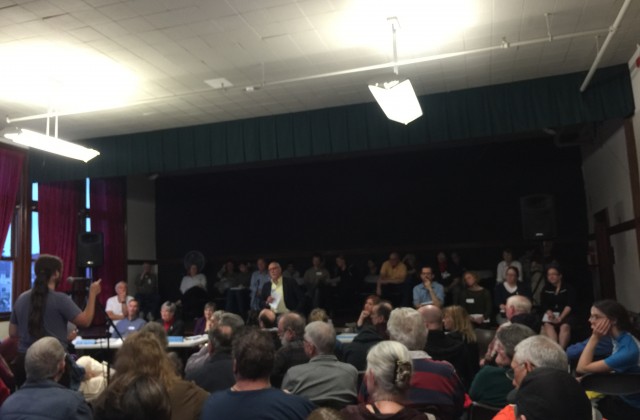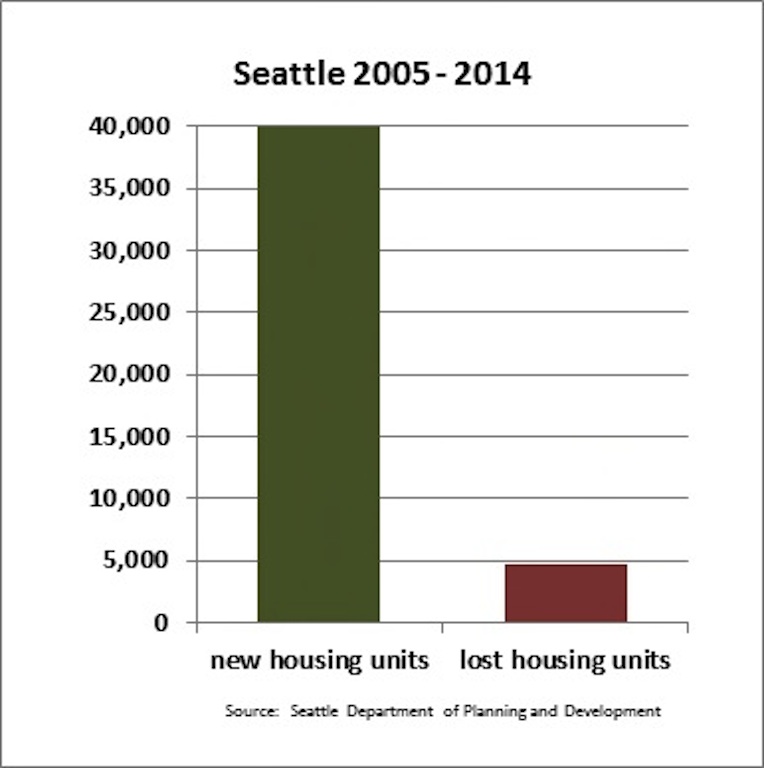U District Upzones: Herbold’s Modest Proposal
I stopped by a meeting organized by the Displacement Coalition last night about the proposed changes in zoning to the University District. The meeting was what we call in the business a “Twist and Shout Meeting,” a gathering to vent and blow off steam about a civic issues. Nothing is decided and the City isn’t officially listening or gathering input, the get together is really more of a pep rally to keep people emotionally charged about an issues. So the comments were mostly negative, decrying the ugly townhouses cropping up with no parking and people demanding a stop to all zoning changes, period. Then there was Councilmember Lisa Herbold’s comment. Herbold said that she hadn’t seen any official proposal yet from the Seattle City Planning and Development office, but she was proposing a new policy.
I’m paraphrasing, but Herbold said that she’d demand that any housing that demolished or replaced by new construction be accounted for and replaced. And if there was too much existing housing taken down or the kind of housing met some kind of criteria (Herbold didn’t say what that would be), she’d propose disincentives to build new housing.
That’s right. Disincentives for new housing.
I thought I had heard it all, from the idea that more housing means prices will go up to the notion that new housing is an impact that has to be offset with fees, fines, and taxes to generate money to build, yes, more housing.
Now a sitting Councilmember is proposing legislation or implementation of a policy somewhere in the City to create disincentives for the production of new housing. Just think about that for a minute. At a time when City officials wave their arms about a “housing crisis” Herbold is proposing less housing.
Make no mistake, the displacement myth is just that, a myth. So here’s a big fat chart based on data from the City:
We’ve said this over and over again. As a city, we are not plowing over thousands of units of subsidized housing or even lots of cheaper housing. And to the extent that housing units are being taken away, the ratio of replacement is huge, 40,000 units of new to less than 5,000 units “lost.” And remember, few if any of those 5,000 were subsidized and many were simply older single-family homes in low-rise zones being replaced with lots more multifamily housing.
Things at City Hall have taken a Swiftian turn again. First, more new housing to meet surging demand is an impact that has to be slowed down with taxes to punish developers for building what people want so the City can give money away to the non-profit sector to try and meet that need less efficiently. Now, we’re going to penalize and discourage lots of new housing to meet rising demand when it removes far fewer units. It’s not just cutting more, smaller slices of the housing pie, it’s actually making the pie smaller. It’s hard to believe we’re any closer to rational housing policy when there is a determined and studied effort at the highest levels of City Government to actually suppress housing supply.
If it wasn’t so serious, it might even be funny.



